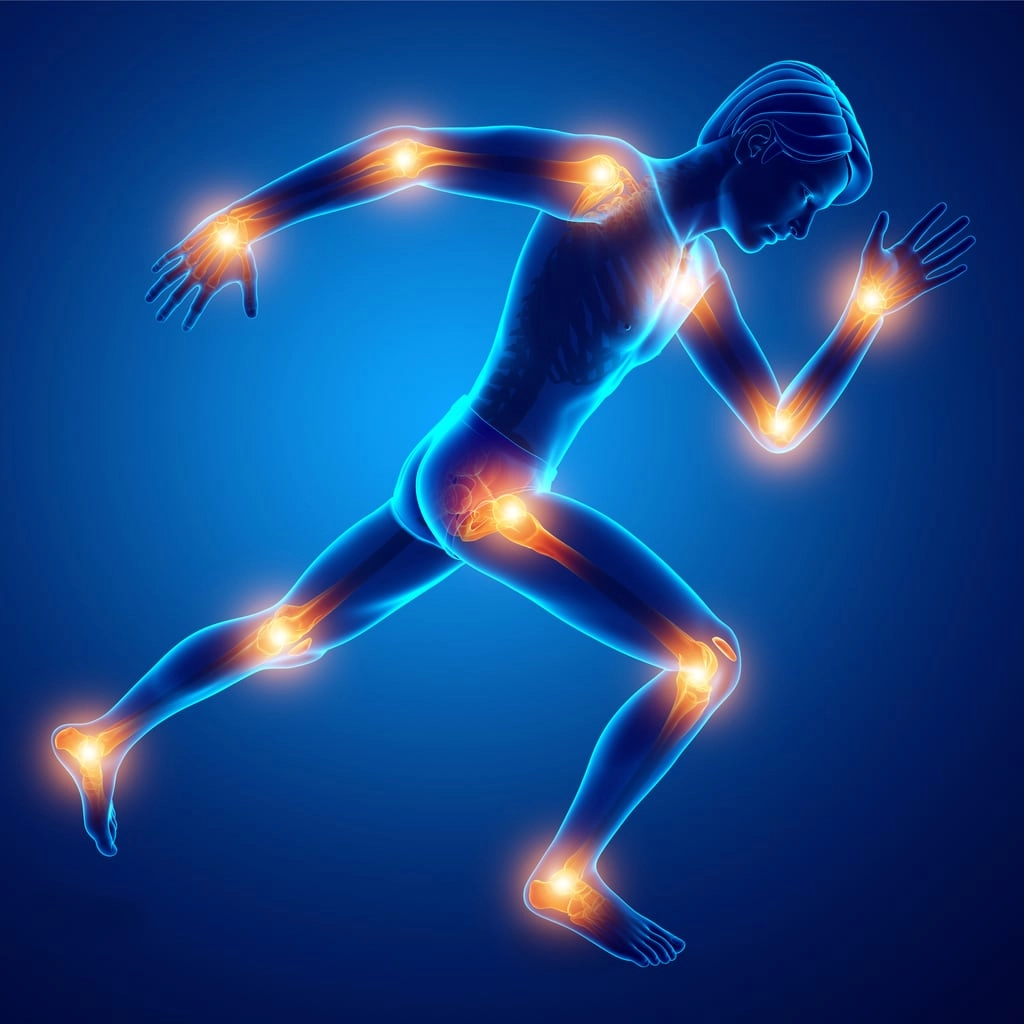Engaging in high-impact activities can be exhilarating and beneficial for overall fitness. However, these activities often put significant stress on your joints, increasing the risk of injury. Safeguard Your Joints During High-Impact Activities is crucial for maintaining long-term joint health and avoiding pain.
This article provides practical tips to protect your joints, stabilize them, and keep them healthy during high-impact exercises

What Can You Do to Safeguard Your Joints from Injury During High-Impact Activities?
Protecting your joints from injury involves several strategies:
- Warm-Up Properly: Always start with a thorough warm-up before engaging in high-impact activities. Warming up increases blood flow to your muscles and joints, enhancing flexibility and reducing the risk of injury. Include dynamic stretches and light cardio in your warm-up routine.
- Wear Appropriate Footwear: Choose shoes designed for your specific activity. Proper footwear provides the necessary support and cushioning, reducing the impact on your joints. For running, opt for shoes with good shock absorption. For sports, ensure the shoes offer stability and grip.
- Use Protective Gear: Invest in protective gear such as knee pads, elbow pads, and wrist guards. This gear can absorb shock and provide added support, minimizing the risk of joint injuries.
- Maintain Proper Form: Correct technique is crucial when performing high-impact exercises. Poor form can lead to undue stress on your joints. If you’re unsure about your technique, consider working with a trainer or coach to ensure you’re using the correct form.
- Gradually Increase Intensity: Avoid sudden increases in the intensity or duration of your workouts. Gradually build up your activity levels to allow your joints to adapt to the increased stress. This approach helps prevent overuse injuries and strains.

What Are High-Impact Activities for Joint Pain?
High-impact activities are those that involve significant stress and repetitive force on the joints. Some common high-impact activities to Safeguard Your Joints include:
- Running: While running is excellent for cardiovascular health, it places repetitive stress on the knees, hips, and ankles. Proper footwear and running techniques are essential to minimize joint strain.
- Jumping Sports: Activities like basketball and volleyball involve frequent jumping and landing, which can impact the knees and ankles. Proper technique and strengthening exercises can help protect these joints.
- High-Intensity Interval Training (HIIT): HIIT often includes explosive movements such as jumping, sprinting, and rapid changes in direction. These movements can strain the joints if not performed correctly or without adequate conditioning.
- Contact Sports: Sports like football, rugby, and martial arts involve physical contact and sudden movements. This can lead to joint injuries if proper protective gear and techniques are not used.

How to Stabilize Joints?
Stabilizing your joints is vital to prevent injuries and maintain optimal function. Here are some effective strategies to Safeguard Your Joints :
- Strengthen Surrounding Muscles: Strengthening the muscles around your joints provides better support and stability. Incorporate strength training exercises focusing on the muscles surrounding your knees, hips, and shoulders.
- Engage in Balance and Stability Training: Exercises that improve balance and stability, such as yoga or Pilates, can enhance joint stability. These activities help develop the core and stabilizing muscles, which support proper joint alignment.
- Use Joint Braces: For additional support, consider using joint braces or supports during high-impact activities. These devices help stabilize the joint and reduce excessive movement that could lead to injury.
- Maintain Flexibility: Regular stretching and flexibility exercises keep your joints limber and improve your range of motion. Incorporate stretching into your warm-up and cool-down routines.

What Can You Do to Keep Your Joints Healthy?
Maintaining joint health involves a combination of lifestyle practices and preventative measures:
- Stay Active: Regular physical activity is essential for joint health. Engage in low-impact exercises like swimming, cycling, and walking to keep your joints active without causing excessive stress.
- Manage Your Weight: Excess weight puts additional stress on your joints, particularly weight-bearing ones like the knees and hips. Maintaining a healthy weight through a balanced diet and regular exercise can reduce joint strain.
- Stay Hydrated: Proper hydration is crucial for joint health. Drink plenty of water to keep your joints lubricated and functioning smoothly.
- Incorporate Joint-Friendly Foods: Include foods rich in omega-3 fatty acids, antioxidants, and vitamins in your diet. These nutrients can help reduce inflammation and support overall joint health. Examples include fatty fish, nuts, seeds, and leafy greens.
- Listen to Your Body: Pay attention to any signs of joint pain or discomfort. If you experience persistent or severe joint pain, seek medical advice. Early intervention can prevent further damage and manage symptoms effectively.
Conclusion
Safeguard Your Joints during high-impact activities is essential for maintaining long-term joint health and preventing injuries. By warming up properly, using appropriate footwear, wearing protective gear, and following correct techniques, you can reduce the risk of joint injuries.
Additionally, stabilizing your joints through strengthening exercises and balance training, along with maintaining a healthy lifestyle, can help keep your joints in optimal condition. Prioritizing these practices will allow you to enjoy high-impact activities while protecting your joints and overall well-being.
To Know More – Tips to Keep Joints Healthy
